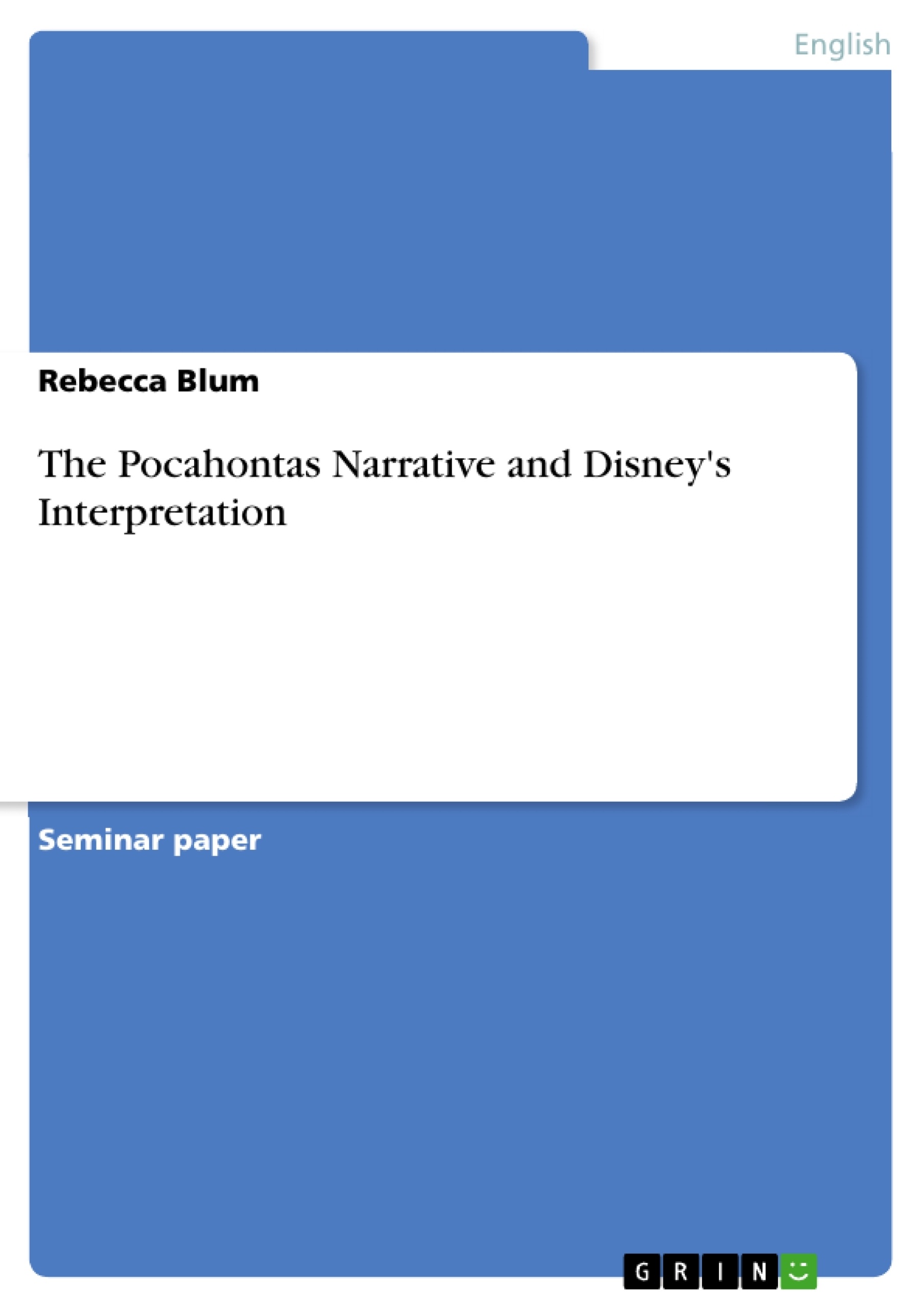Ever since the colonization of the American continent, the Native Americans and their culture have concerned and often fascinated the Euro-American population. This is shown clearly by the facts that the Indian captivity narrative became the first truly popular genre of American literature and that by the beginning of the 19th century Indian American characters had become central characters in theatrical plays and on American stages throughout the country. After the invention of motion picture in 1895, North American Indian characters made an entrance into plenty of American movies. Unfortunately, in most cases it was not of great concern to the producers to depict the Native Indians in a realistic way, but rather to appeal to a broad audience, which was best to be achieved by using popular stereotypes, which had been around for 200 years. Up till today, stereotypical conceptions have dominated American motion picture, and only very few movies have tried to depict Native Americans in a more realistic and sensitive way.
Keeping this history of American Indian movies in mind, it becomes apparent that Walt Disney’s animated movie Pocahontas, released in 1995, stood in a long tradition of movies, of which only in the recent past a few had broken with the traditional stereotypes. The Disney Company, too, was severely criticized for reusing stereotypical conceptions in their depiction of Pocahontas and her tribe and for being historically inaccurate and insensitive to the Native Americans’ past.
The following paper will first give a brief summary of the historic Pocahontas’ life, which is necessary in order to understand how far Disney kept or changed historic facts, and then depict the origins of the Pocahontas myth. Afterwards, the most important aspects of the movie will be described and analyzed with special regard to the depiction of colonists and colonized. The final chapter will deal with the criticism on the movie and try to conclude whether Disney has indeed failed to be sensitive to Native American culture or if the critics have been too hard on an, after all, animated children’s movie.
Table of Contents
- Introduction
- Pocahontas: Origin and Creation of a Myth
- Roy Disney's Pocahontas (1995)
- European societas vs. Native American communitas
- Smith and Pocahontas as the New World's Adam and Eve
- The Perception of the Other
- Pocahontas as a Teacher of Philanthropy and Respect
- Pocahontas and its Critics
Objectives and Key Themes
This paper aims to analyze the historic Pocahontas narrative and its portrayal in Disney's 1995 animated film, "Pocahontas." It will examine the origins of the Pocahontas myth and explore the film's depiction of colonists and colonized, specifically addressing the historical accuracy and cultural sensitivity of the film's representation.
- The historical life of Pocahontas and the development of the Pocahontas myth
- The portrayal of European colonialism and Native American culture in Disney's "Pocahontas"
- The role of stereotypes in shaping perceptions of Native Americans
- The film's reception and criticism, particularly from Native American communities
- The impact of the Pocahontas narrative on American identity and cultural memory
Chapter Summaries
The first chapter provides an introduction to the history of Native American representation in American cinema, highlighting the long tradition of stereotypical portrayals. It then introduces Walt Disney's "Pocahontas" as a film that has faced criticism for its depiction of Native American culture. The second chapter delves into the historical life of Pocahontas, exploring the limited factual knowledge about her and the origins of the Pocahontas myth.
The third chapter focuses on the film "Pocahontas," analyzing key aspects of the film's narrative and its portrayal of colonists and colonized. It examines the film's depiction of the cultural clash between European and Native American societies, as well as the film's portrayal of Smith and Pocahontas as figures akin to Adam and Eve in the New World.
Keywords
The main focus of this paper lies on the Pocahontas narrative, Native American representation in film, historical accuracy, cultural sensitivity, colonialism, stereotypes, the Pocahontas myth, and the Disney film "Pocahontas."
- Quote paper
- Rebecca Blum (Author), 2004, The Pocahontas Narrative and Disney's Interpretation, Munich, GRIN Verlag, https://www.hausarbeiten.de/document/39772


